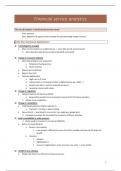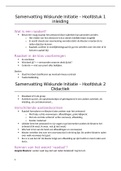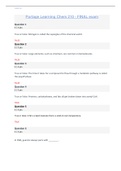Financial service analytics
The rise of analytics in the financial services sector
- Then: physical
- Now: digital first & physical when needed for specialized high margin services
Why this trend toward digitalization?
1) Technology has changed
• More communication on a digital device -> more data stored and processed
More decisions data-driven (evidence based) & automated
2) Change in consumer behavior
• More demanding of user experience
a. Simple purchasing process
b. Quick response
• Require personalization
• Require low costs
• Embrace digitalization
a. High trust in IT firms
b. Interact with an increasing number of digital devices (pc, tablet…)
c. Accept user data is used for corporate purposes
d. Accept to interact with robots
3) Change in regulation
• Payment Services EU Directive (PSD2):
a. Required to provide access to payment accounts for third party providers
Allows more competition
4) Change in competition
• Traditional banks (incumbents) operate in:
a. Payments + lending + deposit-taking
• New entrants -> specialized in one service (ex: apple pay, google pay)
Competition pushes the incumbent to compete in different activities
5) Bank’s profitability is under pressure
Banks need to innovate to increase profitability
• Return to equity declines:
a. Reason: overcapacity
▪ Low margins: sufficient to cover short term variable costs but not for long term
growth
b. Solutions:
▪ Mergers
▪ Digitalization’s
▪ Success in digitalization: more revenues, less costs => more profits
6) COVID-19 as a catalyzer
• People stay home, but still ask for financial services
1
, Heterogeneity in success
➔ Difference between digital latecomers and digital champions
➔ 2 digital champions in Belgium: KBC and Belfius
➔ Digital latecomers: VDK, Argenta, Crelan, AXA
Big banks are successful, smaller banks are much less successful in digitalization.
Why heterogeneity? Hurdles in the transformation
1) Cost of the transformation (IT, data, new staff)
• To be balanced with gains from automation and digitalization
a. Less personnel
b. Less brick-and-mortar branches
2) People: war for talent
3) Technology: fast evolving
• Staying up-to-date is challenging (cost, people, vision)
4) Vision: proactivity and persistence, as it takes time
• Chief digital officer, chief information officer and chief data officer -> important
Since having a huge data base offers a compelling advantage in AI, there is a tendency for dominant
companies to become ever more dominant.
Digital strategy of big banks is to become the online supermarket for all services
OPM: next level -> bank-insurance
Introduction to R
See ppt. slide 61-76
2
,From data to insights
• Which data?
a. Abundance of financial data available (ex. Stock prices)
b. All available in R package quantmod (=quantitative modelling)
• How in R
What we observe on day t: DATAt. what we assume: DATAt =SIGNALT+ NOISET
We want to know SIGNALT => actionable insights on day t
Extract the signal from the data and remove the noise
• How to do this?
a. Price data themselves need to be transformed to give insights
b. Examples of such transformations (that remove noise):
▪ Smoothening the price data by taking averages
▪ Studying financial risk and reward by computing returns (=differentiating)
▪ Time series aggregation: from individual trades to daily, weekly… (=go to a low
frequency)
Transformations are done repeatedly and are best programmed as function
Functions in R
➢ Name: own choice
➢ Between brackets: what the
function is doing.
• Functions are like data objects in R
• Advantage of functions = contain reusable code:
a. Reduces the workload, Helps avoid errors
3
, • Example: function that computes the square
Define the power2 function
Function power2 now exists in
the environment and can thus
be used
Since there is only one
argument in the function, there
is no confusion possible
• The advantage of a statistical software environment like R is most of the functions already exist
Base functions
a. Statistical functions: mean(), min(), max(), median(), sd(), IQR(),summary(),…
b. Graphical tools: plot(), hist(), qqplot(), boxplot(),…
c. Object handling functions: read.table(), read.csv(), readRDS(), saveRDS(), write.table(), write.csv(),
write.zoo(), save(), load(), rm(), head(), tail(), …
d. Probability functions: rnorm(), pnorm(), qnorm(), rt(), pt(), qt(), rcqhisq(), pchisq()
Note: sd = standard deviation, IQR= interquartile range (Q3-Q1)
• Example of base function: sd()
a. First open documentation about the function: ?sd
b. Sd has 2 arguments: X and na.rm
▪ Na.rm = not available.remove
▪ This argument tells you how to handle missing data
▪ Ex if missing data can be removed that na.rm = TRUE (the default value is FALSE)
• Function: args()
= discover the arguments of a function
R package
• Base packages are automatically installed when you install R. They are loaded automatically every time
you open R. Examples are: stats, utils
• Other packages need to be installed (once) and need to be loaded (every timeyou open a new R session).
Example: “quantmode”
(installation of packages see slide 15.)
• Saving that data:
4






